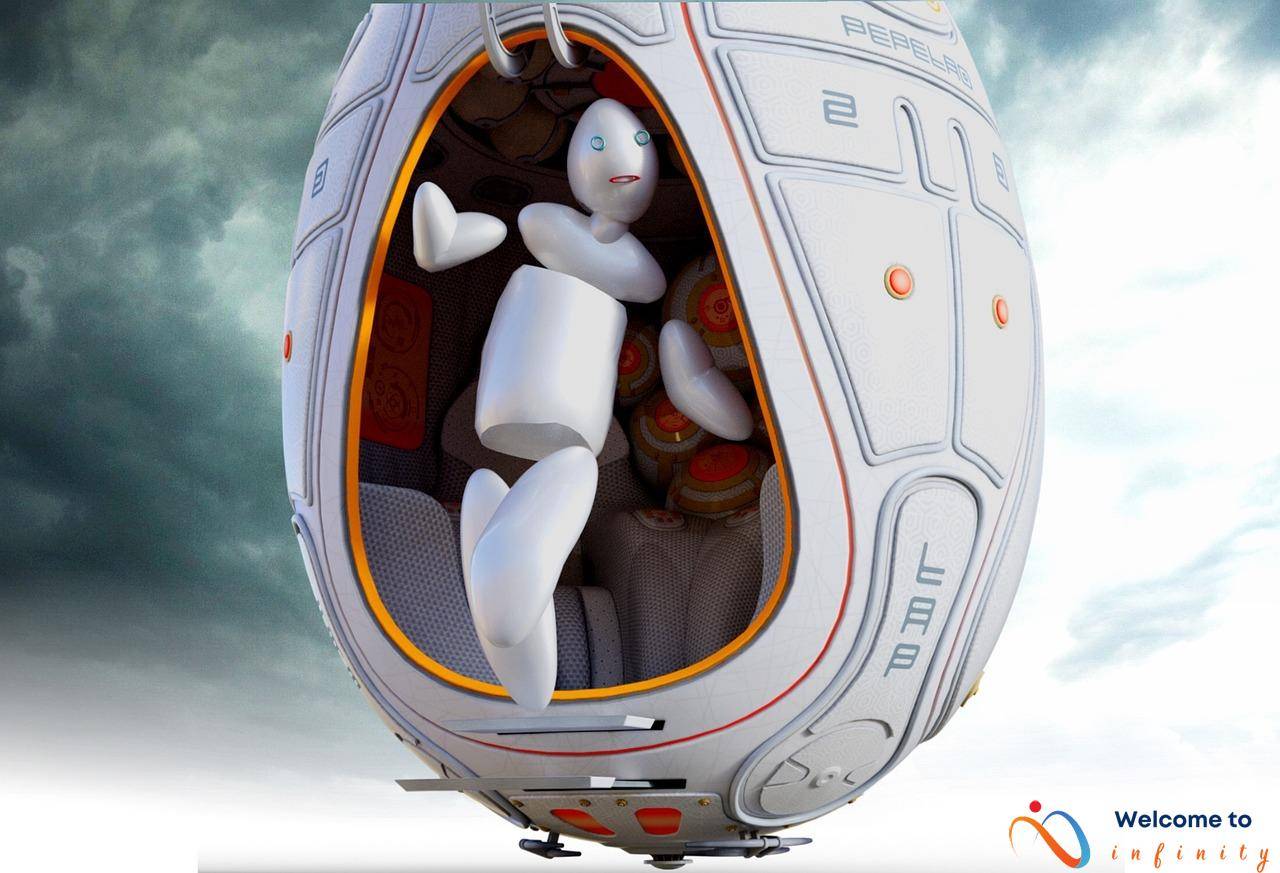Artificial intelligence (AI) has emerged as the driving force behind the evolution of robotics. The integration of AI and robotics has revolutionized the efficiency of automated processes, enabling intelligent machines to operate even more effectively. In recent years, this technological innovation has contributed to the development of intelligent robots that can learn, adapt, and make decisions based on data analysis.
The application of AI in robotics is diverse, catering to various sectors including industrial, medical, and domestic. Intelligent robots are designed to perform complex tasks such as surgical procedures, manufacturing, and even cooking. The advancements in AI have enabled robots to sense obstacles, adjust their actions, and navigate through unfamiliar environments without human intervention.
The integration of AI in robotics has unlocked countless opportunities for technological innovation, which has resulted in a significant enhancement in the capabilities of intelligent machines. Robotics has become an integral part of several sectors including healthcare, manufacturing, and logistics, to name a few. AI has enabled the development of intelligent robots capable of performing tasks that require a high level of accuracy and precision, ensuring an optimal output in terms of speed and efficiency.
Applications of AI in Robotics
AI is revolutionizing the robotics industry by enhancing the capabilities of intelligent machines. The integration of AI technologies in robotics has led to a significant transformation in the way robots operate. AI technologies are being incorporated into various sectors of robotics, including industrial, medical, and domestic. This has allowed robots to perform highly complex tasks that were previously impossible. These advancements have enabled robots to learn, make decisions, and adapt to changing environments.
In the industrial sector, robots are being used for tasks such as assembly, manufacturing, and logistics. With AI, these robots can now make decisions based on the situation and adapt to new environments. In the medical sector, robots equipped with AI capabilities are being used for surgical procedures, patient rehabilitation, and monitoring. In domestic settings, robots are being used for cleaning, entertainment, and care of elderly or disabled patients.
The integration of AI in robotics has also allowed robots to become more efficient and accurate. Robots can now detect and respond to changes in their environment, making them more adaptable to different situations. For example, robots equipped with AI can detect errors in a car's manufacturing process and correct them automatically, reducing the chances of defects in the final product.
AI in robotics has brought about a fundamental shift in the way we interact with intelligent machines. Advancements in AI and robotics will continue to shape the industrial, societal, and economic landscape in the future. It is essential that we carefully consider the implications of this development and work towards ensuring that we harness the power of AI and robotics for the benefit of humanity.
Challenges in AI Robotics
Despite the remarkable advancements in AI and robotics, there are still several challenges that need to be tackled to ensure the responsible use of intelligent machines. Ethical considerations, such as the potential loss of jobs and the privacy of individuals, must be taken into account when designing and implementing AI systems.
The safety of humans and the environment is also crucial in the development of intelligent machines. For example, self-driving cars must be equipped with fail-safe mechanisms and sensors that prevent accidents. Moreover, there are concerns about the security of AI systems, as hackers could potentially utilize them to cause harm.
Economic implications of AI and robotic technologies must also be taken into account. The automation of manual labor could disrupt job markets, and it is important to consider the social and economic consequences of this technological advancement. Developing appropriate policies and regulations to address these challenges will help ensure the safe and responsible use of intelligent machines.
Moreover, it is essential to develop a responsible framework for AI robotics, outlining ethical considerations and guidelines for the development and use of intelligent machines. This framework should include accountability and transparency to ensure that the actions of AI systems align with ethical and moral standards.
In conclusion, while AI has revolutionized robotics, there are still challenges that need to be addressed to ensure the safe and responsible use of intelligent machines. Addressing ethical considerations, safety concerns, and economic implications and developing a responsible framework will help guide the development and use of intelligent machines for the benefit of humanity.
Impact on Employment
The integration of AI technologies in robotics is expected to have a significant impact on employment. With the increasing sophistication of intelligent machines, the automation of manual labor is becoming more prevalent. This development has the potential to increase efficiency in industries such as manufacturing, logistics, and healthcare. However, it is also important to consider the social and economic consequences of this shift.
As more jobs are automated, there is a risk that many workers may find themselves redundant. This could lead to increased unemployment and economic insecurity, and may exacerbate existing inequalities in society. In addition, the displacement of human workers by intelligent machines may result in a loss of skills and expertise that could be difficult to replace.
It is therefore important to carefully consider the impact of AI robotics on employment. While automation can be beneficial in certain contexts, it is essential to ensure that workers are not left behind. One potential strategy is to invest in retraining programs to enable workers to develop new skills that are in demand in the robotics industry. Another approach is to focus on the development of AI augmentations that can work in collaboration with human workers, rather than replace them entirely.
Ultimately, the impact of AI robotics on employment will depend on a range of factors, including the rate of technological progress, the costs and availability of robotics technology, and the response of policymakers and industry leaders. It is important to consider the implications of this development carefully and work towards a future where the benefits of robotics are shared widely across society.
Integration of AI and Human Workers
One of the biggest concerns surrounding the use of AI in robotics is the impact on employment. However, instead of viewing intelligent machines and human workers as competitors, we can instead integrate these two forces to create a more efficient and effective workforce.
In industries such as manufacturing and logistics, robots can take on monotonous and repetitive tasks, freeing up humans to focus on more complex and creative tasks. Human workers can also provide supervision and decision-making skills, ensuring that the robots are operating safely and efficiently.
This collaboration can also lead to the development of new job roles that require a combination of technical and interpersonal skills. For example, someone can oversee the communication and coordination between robots and human workers, or specialists can work on developing and improving the AI-driven robotics system.
Integrating AI and human workers can also lead to more diverse and inclusive work environments, as people from different backgrounds and skill sets work together to achieve common goals.
Overall, rather than being a threat to human employment, AI-driven robotics can instead be a powerful tool to maximize the strengths and capabilities of both intelligent machines and human workers, leading to a more productive and rewarding workforce.
AI Ethics and Responsibility
As AI and robotics continue to advance, there is a growing need to ensure that these intelligent machines are designed and used in a responsible and ethical manner. A responsible framework for AI robotics will help to mitigate risks associated with the development and use of intelligent machines, including issues such as privacy, transparency, and accountability.
One of the primary concerns with developing AI robots without any ethical framework is the potential misuse of these technologies. Indeed, history has repeatedly shown that technology has been used for unethical purposes, and AI is no exception. Therefore, it is critical to ensure that AI robotics are designed to align with ethical and moral standards.
A responsible framework for AI robotics should take into account issues such as privacy, bias, transparency, and accountability. It should also address issues related to the development of autonomous systems that are being designed to make decisions without human intervention. In addition, it is important to consider how AI robots will interact with humans and to ensure that they are not used to violate human rights.
The development of an ethical and responsible framework for AI robotics will require a collaborative effort from various stakeholders, including policymakers, scientists, and industry experts. It is also important to engage the public in discussions about the development and use of these technologies to ensure that we develop AI robotics that are aligned with societal values and expectations.
In conclusion, AI robotics have the potential to change the world, but we need to ensure that they are developed and used in a socially responsible and ethical manner. A responsible framework for AI robotics will help to guide the development of these technologies and ensure that they are developed in a way that benefits humanity. By considering ethical and moral issues, we can develop AI robotics that improve our lives and society while minimizing the risks associated with these technologies.
Future of AI Robotics
The future of AI and robotics is an exciting prospect as advancements in technology continue to shape the landscape of industries, societies, and economies. With the integration of AI in robotics, we can expect to see intelligent machines that can perform complex tasks and make decisions, increasing the efficiency of automated processes and applications.
However, it is crucial that we carefully consider the implications of this development. We need to ensure that the power of AI and robotics is harnessed for the benefit of humanity, and that the technology is used in a socially responsible manner. This includes addressing the ethical considerations and safety concerns that come with the integration of AI in robotics.
Furthermore, the impact of AI and robotics on employment should also be closely monitored. As intelligent machines replace human workers, it is important to consider the social and economic consequences of this development. One approach to address this impact is to integrate AI and human workers, creating a more efficient and effective workforce.
As we continue to develop AI and robotics, we must also prioritize creating a responsible framework for their use. This includes developing guidelines and regulations to ensure that the actions of intelligent machines align with ethical and moral standards. Only then can we fully harness the potential of AI and robotics to benefit humanity.
In summary, the future of AI and robotics is full of promise and possibility. But we must carefully consider the implications of this development and work towards ensuring that we use this technology responsibly and for the greater good.
Conclusion
As we can see, the integration of AI in robotics has revolutionized intelligent machines, leading to their enhanced capabilities in decision-making, adaptability, and autonomy. This development has improved the efficiency and effectiveness of automated processes and applications in various sectors, including industrial, medical, and domestic.
However, the incorporation of AI in robotics also raises several challenges that need to be addressed. One of the primary challenges is the ethical and moral considerations associated with the use of intelligent machines, as their actions must align with societal values and principles. Additionally, safety concerns related to the use of AI robotics must be thoroughly assessed to prevent accidents and potential harm to humans and other living beings.
Another critical challenge posed by the integration of AI in robotics is the impact on employment, as intelligent machines may replace human workers, leading to job displacement and economic consequences. To mitigate this challenge, one approach is to integrate AI and human workers to maximize their strengths and create a more efficient and effective workforce.
It is crucial to address these challenges to ensure the safe and responsible use of AI in robotics, for the benefit of humanity. Developing a responsible framework for AI robotics will guide the development and use of intelligent machines and ensure they are used in a socially responsible manner. The continued advancement of AI and robotics will shape the industrial, societal, and economic landscape, and it is essential to carefully consider its implications and work towards maximizing its benefits while minimizing its risks.










